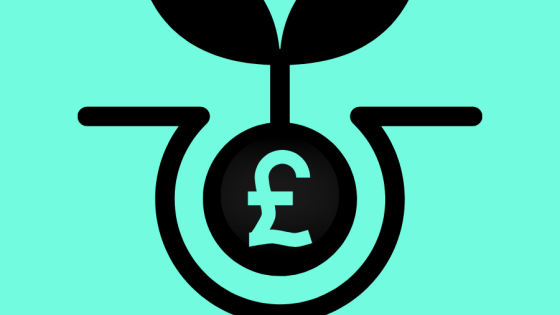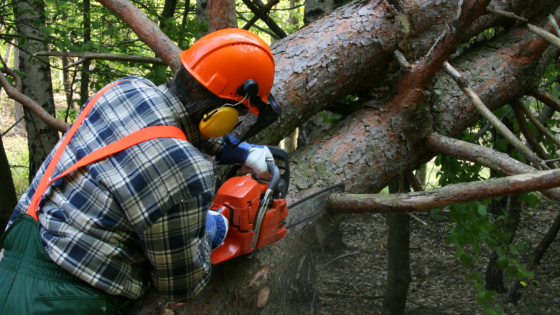The Blockchain-based Metaverse
15 Dec 2021
What is the Metaverse and is it really big business?

Meta-what?
Since Facebook mentioned the word ‘Meta’ in its corporate rebranding recently, the whole concept of the metaverse has become a hot topic. The idea of a virtual reality parallel to our own is not new, and has been fictionalised in books and movies many times in years gone by. The exciting, and for some incomprehensible prospect of the metaverse, is now becoming a reality, and the blockchain is playing a huge part in making it happen.
The first thing to consider is that the blockchain metaverse is a different place to the traditional one (more about that later), but being a metaverse they have the same things in common. That is, they are digital places, operated in a parallel virtual amplified reality outside of our physical world, providing a place for like-minded people to be social, share enhanced experiences, from attending music events to playing games, or visiting art galleries (displaying NFTs of course).
Consider this further from a blockchain perspective however, and you will see there are no multiple metaverses, only one. Using your digital identity, you can bridge, teleport and be ever-present across a shared universe, where virtual worlds, brands and services come together. Your avatar can move freely across multiple virtual worlds, interact and communicate with others, all whilst transacting value at the same time. Just like there is only one planet earth with multiple worlds and cultures, there is only one metaverse with multiple virtual worlds and cultures.
Blockchain versus Traditional Metaverse
For anyone with children or grandchildren who own a gaming device like an Xbox, you will be all too aware of a game called Fortnite, which dominated our lives during the lockdown of 2020. Fortnite is a great example of a traditional metaverse and was one of the first to introduce social aspects, like music events. In this game, players can use their own digital currency, V-Bucks, to acquire skins and customisations for their avatars, or to buy and trade weapons to enhance their Fortnite gaming experience. It is, in fact, a multi-billion dollar business annually. Sound good so far (perhaps not for your wallet)? There are some limitations to this type of traditional metaverse however.
Firstly, the avatars are exclusive to Fortnite and can’t be moved to other virtual realities, like Minecraft or Roblox. Secondly, if the Fortnite servers stop working, your digital assets become redundant, and are lost forever, along with your children’s hard earned pocket money. Thirdly, the game assets purchased by the user aren’t owned, they are simply borrowed. This is because all ownership and copyright remains with the game’s maker, Epic Games; they control all metaverse assets and act as a centralised entity, something many crypto enthusiasts choose to avoid.
Step forward the blockchain-based metaverse and the power of NFTs (non-fungible tokens). With blockchain and smart contracts, it is now possible to own and utilise your virtual assets like never before, driven by your ever-changing preferences, tastes, and motivations. Imagine using your Cryptopunk or Bored Ape to roam around a virtual world! As a reminder, NFTs are digital tokens living on the blockchain that are entirely unique and in most instances owned by you to enjoy and monetise. They are digital representations of one-off objects; avatars, artwork, cards, names, game items, virtual land, memberships and so much more. This is the main advantage of the blockchain metaverse, with such tokens also being used to create and enhance virtual experiences, or even offered as collateral for short-term borrowing with the likes of nftfi.com. If a game becomes redundant, the metadata can be used elsewhere, or even rented or sold to other people if gaming isn’t your thing anymore, all on a decentralised basis of course.
Virtual Land
Whilst NFTs give you the power to explore the blockchain metaverse, the concept of virtual land really is a game-changer.
Another piece of crypto magic, the blockchain virtual world (BVW), is what is created when virtual land NFTs are put together. In essence, the BVW is a space where people can dive into a 3D virtual reality. These pieces of digital land give its owners the chance to design and build their imagination into the metaverse. Incentivising creativity in this way allows metacitizens to build digital structures, or even design elements that become an important part of the culture of the space or gaming activity. In true crypto style, land owners may be rewarded in a manner similar to staking.
Crypto investors with a creative side can start to build venues they have only been able to imagine, such as:
• Sports stadia
• Music venues where real-life DJs will be able to perform metashows
• Gaming elements
• Advertising spaces
• Art galleries
• Shops and outlet centres
• Swimming pools and beaches
Certain BVWs will have certain characteristics, to attract like-minded people to that part of the metaverse. There are already different types of BVWs. Some, such as Somnium Space and Decentraland are more like social networks, whereas others, like The Sandbox, act as play-to-earn games. All are unique in their own way, but all are open to whoever wishes to experience that corner of the metaverse.
Monetisation of the Metaverse
To many people initially, the concept of monetising the metaverse will seem mercenary. But with many of the world’s greatest minds predicting exponential growth of BVWs and the metaverse as a whole within the next few years, this could be our future. New revenue streams and social structures will appear in a short space of time.
A good proportion of this economy will come from ownership of virtual land. Using The Sandbox again as an example, land owners can build virtual experiences where users can pay to be a part of it; imagine an exclusive event being held by your favourite band or DJ that you otherwise couldn’t attend. Enhanced sound, mind-blowing 3D visuals, all in a safe environment and for a fraction of the cost of the physical world. Another option is for land owners to rent their space for others to develop – passive income in its truest form.
The revenue earning potential stretches far beyond NFT land. Avatar skins and in-game assets will be rented and sold. Physical world big brands will sell virtual world assets (maybe we can all own a Lamborghini one day?). Metamovies will be released, perhaps starring your own avatar?! Your NFT can be rented to an art gallery. Or your Bored Ape could be chosen to star in a movie, or be a part of a meta-boy band, receiving performance royalties, just like in the physical world.
The blockchain metaverse is overwhelmingly huge and unstoppable.
Metasociety
With all these assets and experiences, a society living within the metaverse is just around the corner. This will have a profound impact on our society as it stands, and could lead to full-time paid jobs, such as:
• Virtual estate agents
• Virtual architects
• Metaverse entrepreneurs
• Fitness instructors
• TV and movie stars (imagine your Bored Ape as the next 007!)
• DJs, bands, musicians, agents, promoters, event managers
• Developers to write smart contracts to bring ideas to life
In essence, imagine all and any physical world jobs and professions, and they could exist within the metaverse, but without any unconscious bias or prejudices coming into play.
The blockchain metaverse has the opportunity to profoundly change the way in which we live our lives, socially, at work, and how we entertain ourselves, by breaking boundaries, breaking- down boundaries, and perhaps creating a world where anything really is possible.
News & Resources

Annual Tax on Enveloped Dwellings

Less than 2 months to self-assessment filing deadline

IHT treatment of unused pension funds and death benefits

VCT and EIS changes

When are employers required to provide security to HMRC?

Budget Summary November 2025

Claim flat rate expenses for work clothing and tools


